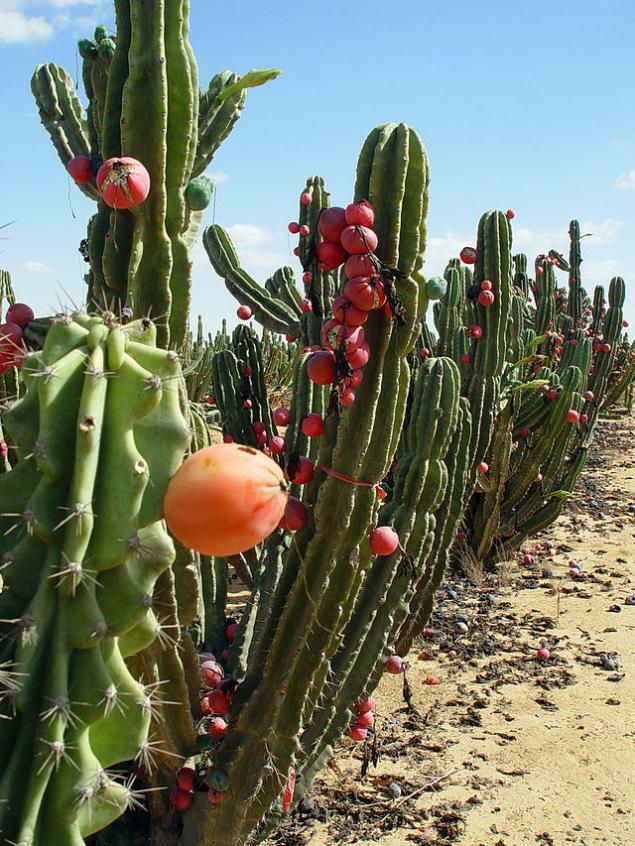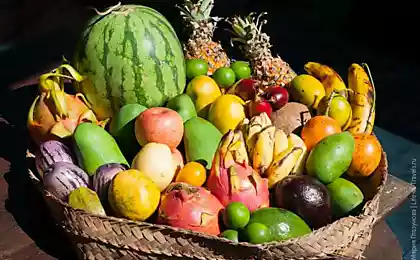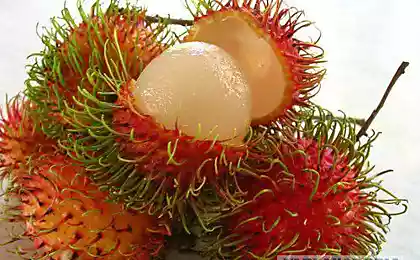480
Prickly pear — a surprisingly useful fruit cactus

Prickly pear native to the Western hemisphere. The first mention of her as popular with the Aztecs fruit, refers to the XIII century. Sweet and sour fruits of the prickly pear was known to the tribes of those Indians who lived on the territory of present-day California. The fruit of this cactus is prized for the fact that their with ease and in large numbers can be collected at certain times, called "season prickly pear".
Now dragon fruit is cultivated in South-East Asia, USA, Israel, Northern Australia.
The fruit weigh 150-600 grams, individual specimens reach kg. The dragon fruit has an oval shape, covered with growths of deciduous shoots. There are three main types of pitaya: dark pink color with white flesh; red color with purple or purple pulp; yellow color with white flesh. The pulp of all fruits has many seeds in the form of black dots.
Taste prickly pear is slightly inferior to its bright appearance. Not flavorful, not saturated, not bright, slightly sweet. But the fruit is very juicy and tender. The pulp is the consistency of the pulp kiwi.
The pulp is eaten raw, it is recommended slightly chilled. From pitaya, you can make juice or wine, and use to flavor other drinks. The flowers are also edible — they can be brewed with tea.
Usually the fruit is cut vertically into two halves. Then you can either cut these halves into slices, or scoop the flesh with a spoon. The juice and pulp of the fruit added to the candy, ice cream, sorbets and yogurts. From pulp cook jams, sauces and jellies. In Spain traditionally, the prickly pear juice mix with lemon and lime for the preparation of soft drinks.

Dragon-fruit is 90% water, so it is very good quenches thirst and nourishes the body. Like all exotic fruit, dragon fruit contains many vitamins, especially vitamin C, antioxidants, minerals, fruit acids and dietary fiber. In addition to the ascorbic acid in the pitaya in large quantities are vitamins B1 (thiamine), B2 (Riboflavin), B3 (Niacin). Of the minerals presented especially potassium, phosphorus, calcium and iron.
Nutritional value per 100 grams:
Protein – 0.5 g
Fats – 0.5 g
Carbohydrates – 13 g
Ash – 0.5 g
Water – 85 g
The seeds of pitaya are rich in valuable lipids, but usually they are indigestible unless chewed. The seeds also contain extremely a lot of tannin.

High content of fiber helps regulate the bowels, eliminate toxins and toxins. The antioxidants included in the fruit are natural neutralizers of free radicals, which are responsible for the formation of cancerous cells and the aging process.
The use of prickly pear has a beneficial effect on the quality of vision. Recommended this exotic fruit to use in gastrointestinal diseases: it is well helps with pain in the stomach, has anti-inflammatory properties. Pitaya also has beneficial effects on the endocrine system, it is recommended for diabetics, helps liver function, and improves metabolism. Due to the high content of vitamin C, dragon fruit boosts the immune system, and regular consumption helps to prevent the occurrence of respiratory diseases such as asthma.
Pitahaya is well absorbed by the body. Fruit is a good source of nutrients and minerals. And while the dragon fruit contains very little calories — about 50 to 100 g, which allows to use it for different diets and active sports to reduce weight.
Dragon-fruit is another exotic product assistant for a healthy lifestyle.
Source: fitfixed.com























